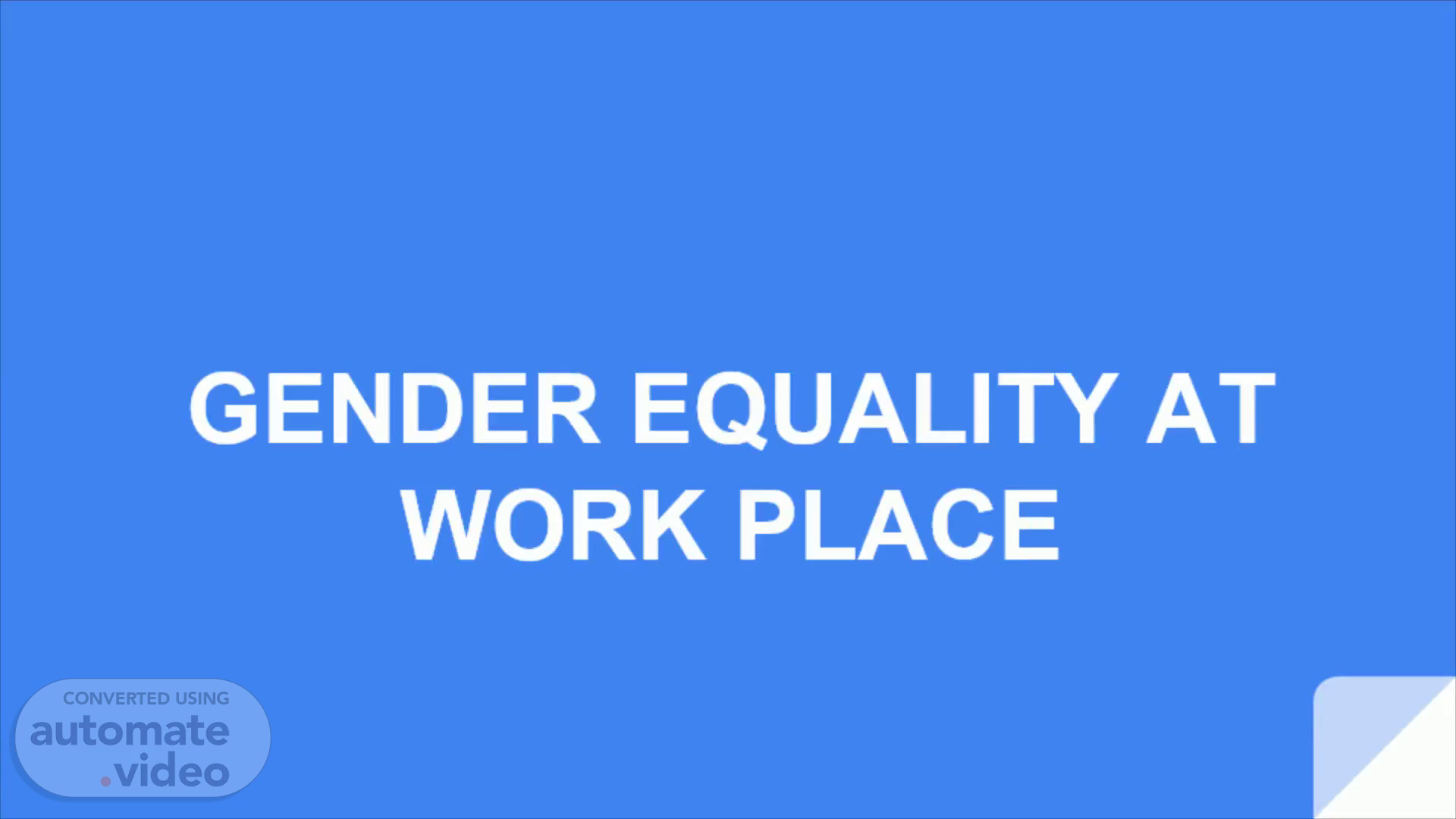
Page 1 (0s)
GENDER EQUALITY AT WORK PLACE.
Page 2 (6s)
Name : Disha Agarwal Class : Mba 2nd year 3rd sem Roll no : 117020672133 Section : A College : R.G.Kedia.
Page 3 (16s)
Introduction. In the history of human development, women have been as vital in the history making as men have been. In fact higher status for women vis-à-vis employment and work performed by them in a society is a significant indicator of a nation’s overall progress. Undoubtedly, without the active participation of women in national activities, the social, economic or political progress of a country will deteriorate and become stagnant. But ironically and tragically, women employees in general, are not taken very seriously by their superiors, colleagues, or society at large. Having a career poses challenges for women due to their family responsibilities..
Page 4 (44s)
Objectives of Gender Equality. To gain knowledge about the problems and challenges faced by urban working women in the workplace. To identify the key socio-economic pointers contributing to women’s status, safety and security. To study women’s involvement in various activities/ organizations for upliftment of family, community and society that can lead to their overall development. To find out possible solutions that could help them to overcome the problems that they face in the workplace.
Page 5 (1m 6s)
SCOPE OF THE STUDY. The study evinces the following research problems for the study at hand related to problems and challenges faced by working women in the workplace: 1. Balancing between paid employment and family care. 2. Work related stress problems faced by working women. 3. Victims of physical harassment and unfair treatment in the workplace..
Page 6 (1m 24s)
LIMITATIONS OF THE STUDY:. The study area was confined in ICICI Bank Hyderabad. Thus the results of the study are applicable only to similar kind of situation analysis. The study pertains to a certain time period. The result may not be valid for over a longer period of time due to fast changing socio-economic and socio-cultural setting in this study area. Because of limitation of time and other resources involved in research, the present study was restricted to a limited number of samples. The result drawn from this study, therefore may have limited application i.e., it cannot be assumed to provide information, capable of generalization over other regions and could have regional biasness, but surely the broad similarities specific to a particular gender, will provide some insight to the study..
Page 7 (1m 59s)
REVIEW OF LITERATURE. The literature review shows that more focus is on married working women than on unmarried working women (Karl, 2009). It is also seen that focus is more on organized sector rather than unorganized sector of working women (Shalz, 2011). Eggins (1997) advocates for more facilities to women in the workplace, suggesting that “…it is an important part of developmental strategy as well as an act of social justice” The World Bank (1991) estimates that Indian Women make up one-third of the labor force. Singhal (1995)is of the opinion that, “Participation of women in workforce is essential for economic development and population planning.” Somjee (1989) has some very strong critical comments. She has said that “in the history of women’s studies, which is not very long, a variety of approaches have been adopted in order to understand women’s problems and find solutions to them. such approaches range from how women are perceived in various cultures and historical settings, given their biological functions and what nature ‘intended’ them to do, to their decline in power and status vis-à-vis men in the complex social evolution, to a widely shared emphasis on the need to make women equal through the economic on the need to make women equal through the economic and legal route which treats them as individuals rather than those having the sole responsibility for looking after the family.”.
Page 8 (2m 54s)
Ronald J. Burke, Mustafa Koyuncu and Lisa Fiksenbaum (2010) examined The relationship of the perceived presence of organizational practices designed to support women’s career advancement and their work attitudes and satisfaction and their psychological well-being. Data were collected from 286 women in managerial and professional jobs working in a large Turkish bank, a 72 percent response rate. Five organizational experiences were considered: negative attitudes towards women, equal treatment, support, career barriers and male standards. Women reporting more supportive organizational experiences and practices were more engaged in their work, more job and career satisfied, and indicated greater levels of psychological wellbeing.”.
Page 9 (3m 22s)
BIBLIOGRAPHY. • Agapiou, A. (2002). Perceptions of gender roles and attitudes toward work among male and female operatives in the Scottish construction industry. Construction Management & Economics, 20(8), 697-705. • Andal, N. (2002). Women and Indian society: Options and constraints. New Delhi: Rawat Publications. Arnove, R. F., Torres, C. A., & Franz, S. (Eds.). (2012). Comparative education: The dialectic of the global and the local. Rowman & Littlefield Publishers. Beck, L., & Keddie, N. R. (Eds.). (1980). Women in the Muslim world (Vol. 13). Cambridge: Harvard University Press..
Page 10 (3m 52s)
CONCLUSION. Gender equality is when people of all genders have equal rights, responsibilities and opportunities. Everyone is affected by gender inequality - women, men, trans and gender diverse people, children and families. It impacts people of all ages and backgrounds. We need gender equality urgently. Gender equality prevents violence against women and girls. It’s essential for economic prosperity. Societies that value women and men as equal are safer and healthier. Gender equality is a human right. Everyone benefits from gender equality..